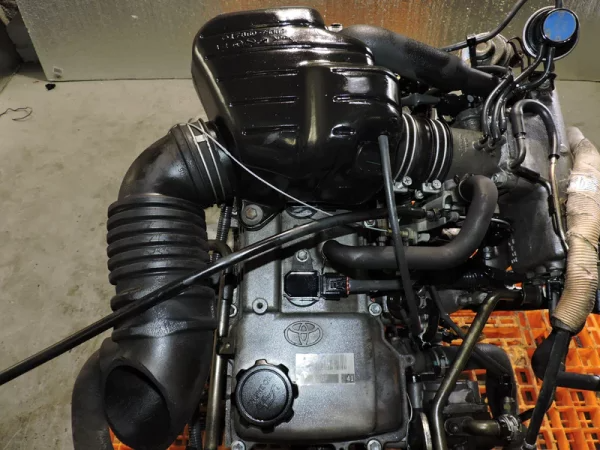
2020 Acura ILX Engine Assembly
January 3, 2023
2019 Honda Odyssey Engine Assembly
January 3, 20232Jz engine for sale
$4,500.00 Original price was: $4,500.00.$3,890.00Current price is: $3,890.00.
Toyota Motor Corporation produces a line of inline-6 car engines under the JZ engine family brand. The JZ engines were 24-valve DOHC engines in 2.5- and 3.0-litre versions that were intended to replace the M-series inline-6 engines.
Initially offered in the 1991 Toyota Aristo, the 2,997 cc (3.0 L; 182.9 cu in) 2Jz engine has been manufactured since 1991 till 2007. 3.39 inches by 3.39 inches make up the cylinder’s bore and stroke. Variable valve timing (VVT-i) was first debuted in 1995 with the 2Jz engine, but it wasn’t until mid-1997 for the 1998 model year that it reached the 2Jz engine and the US market. Despite having the same bore size, bore pitch, and basic construction as the 1JZ, this engine has a taller block deck and longer connecting rods to accommodate the 14.5 mm (0.57 in) stroke increase.
The 2JZ-GE is a widely used variant. The engine produces 209-220 lb-ft (283-298 Nm) of torque at 4800 to 5800 rpm and 215-230 PS (158-169 kW; 212-227 bhp) at 5800 to 6000 rpm.
It has a cast-iron cylinder block, an aluminum head, four valves per cylinder, and sequential electronic fuel injection. In 1995, VVT-i was initially made available for engines. The classic distributor setup seen on the 1JZ-GE was replaced with DIS in the VVT-i variant. Contrary to popular belief, it was not a true COP (Coil-On-Plug, often referred to as Plug-top coil) ignition system, but rather used a single coil to ignite two cylinders, one of which was ignited by a spark plug wire.
Applications:
Lexus IS 300 and Toyota Altezza AS 300
Lexus GS 300/Toyota Aristo
Crown/Crown Majesta by Toyota
Mark II Toyota, Chaser, and Cresta
Lexus Origin
Toyota Advances
Subaru Soarer/
Toyota SC 300
Subaru Supra
Everything You Need to Know About the Toyota 2Jz engine
A close-up look at Toyota’s archetype turbocharged inline-6 engine.
Toyota’s Supra can be traced back to the late 1970s, when the brand split off as a little beefier version of the company’s Celica coupe. Wheelbases on Celica Supras were longer, they were wider, and their six-cylinder engines were more potent. However, they remained Celicas.
When the fourth generation model was released in late 1992, the Supra had shed the Celica from its moniker and now shared about as many connections with the company’s entry-level sport compact as it had with the tacky little Paseo. All of that was primarily due to the factory-installed turbocharged 2Jz engine in the MkIV Supra. This inline-six cylinder engine was so ready to produce sobering sorts of horsepower that, even 28 years later, pro motorsports teams of all kinds still look for the early ’90s 3.0L just as they did decades earlier. And with good cause. The 2JZ-GTE is capable of producing the kind of absurd horsepower that few production engines before or subsequently have been able to do with so few changes.
How to locate one
Here in the US, the 2Jz engine was only offered in Supra Turbo models from 1993 to 1998. It was a brand-new design that was entirely independent of the 7M-GTE from the previous Supra.
The 2Jz engine was first released in Japan in 1991 under the hood of the Toyota Aristo and continued to run in a few Japanese Supras until 2002, when the car was completely phased out.
The 2JZ-GE, a naturally aspirated older brother that is more accessible and built on the same short-block and almost similar but higher-compression rotating assembly as the 2JZ-GTE, is only capable of producing roughly 230 horsepower, according to Toyota. These don’t concern you. Avoid them by avoiding peering behind the hoods of Lexus IS300, GS300, and SC300, as well as non-turbo fourth generation Supras.








